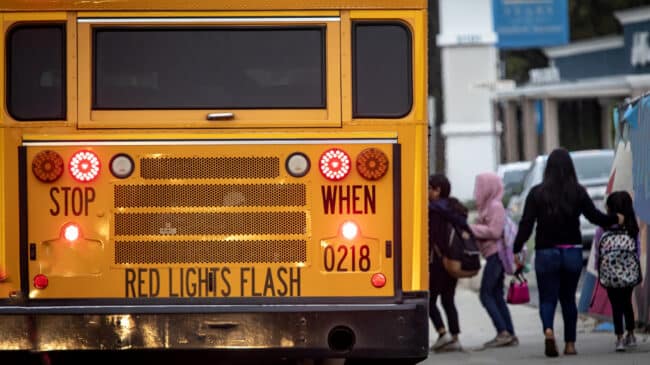Last year, West Virginia launched a robust K-12 open enrollment program that lets students attend any public school so long as seats are available. Data from the West Virginia Department of Education show that more than 7,500 of the state’s public school students participated in open enrollment during the 2023-24 school year.
The most important lesson from West Virginia’s new data is that open enrollment is a popular component of the state’s education marketplace and can flourish in rural areas.
More than 6,100 students, or 81% of transfers, used open enrollment to attend a West Virginia school inside their assigned school district but outside their catchment area. More than 1,400 students used the open enrollment program to attend schools outside their assigned school district.
Nearly 16,000 West Virginia’s students, or six percent of students statewide, used public funds to attend their school of choice via open enrollment, private school scholarships, and charter schools during the 2023-24 school year. Open enrollment was the most common form of school choice, garnering 48% of school choice participants.
Figure 1: Publicly Funded School Choice in West Virginia in 2023-24 School Year
| Program Type | Participants SY 2023-24 | Share of Publicly Funded School Choice |
| Open Enrollment | 7,562 | 48% |
| Hope Scholarship Program | 5,791 | 37% |
| Charter Schools | 2,270 | 15% |
| Total | 15,623 | 100% |
Open enrollment’s popularity isn’t surprising. EdChoice-Morning Consult national polling last month showed that 73% of parents with school-aged children support the policy.
It’s worth noting that 49% of West Virginia’s cross-district transfer students switched to school districts categorized as rural, according to the National Center for Education Statistics. This is noteworthy because it helps dispel the myth that open enrollment policies only benefit urban and suburban school districts.
Figure 2: West Virginia Open Enrollment Participation Rates by Locale in 2023-24 School Year
| Locale | Number of districts | Cross-district transfers received | Share of Cross-district transfers | Within-district transfers received | Share of Within-district transfers | Total transfers received | Total share of Transfers |
| Rural | 33 | 704 | 49% | 1,767 | 29% | 2,471 | 33% |
| Town | 12 | 239 | 17% | 1,033 | 17% | 1,272 | 17% |
| Suburb | 5 | 227 | 16% | 1,374 | 22% | 1,601 | 21% |
| City | 5 | 257 | 18% | 1,961 | 32% | 2,218 | 29% |
| Total | 55 | 1,427 | 100% | 6,135 | 100% | 7,562 | 100% |
While the lion’s share of within-district transfers—32%—occurred in urban districts, nearly the same amount, 29% of within-district transfers, were in rural school districts. These high transfer rates could be because West Virginia’s school districts are countywide, making them larger than school districts in other states.
Moreover, nearly half of cross-district transfer students enrolled in rural school districts. The majority of these students, 31% of all cross-district transfers, transferred to “rural fringe” districts—those nearest to towns or urban areas.
The high rate of transfers to rural fringe school districts could be because they were the nearest alternative to students assigned to districts in suburbs or towns and because 60% of West Virginia’s 55 school districts are categorized as rural.
While most school districts have grappled with declining enrollments for the better part of a decade, some have used open enrollment to bolster their numbers. For instance, the rural Doddridge County Schools used open enrollment to increase their student numbers by more than 3% during the 2023-24 school year. This outcome isn’t surprising—small and rural school districts in California have used open enrollment to bolster their student populations, helping keep them fiscally solvent.
While overall open enrollment participation is smaller in West Virginia than in other states, the program’s initial uptake in its first year as a statewide program is remarkable by comparison. Despite a more sparse population than Wisconsin, which has a thriving open enrollment system, three times as many students used West Virginia’s open enrollment program in its first year of operation than used Wisconsin’s program during its first year of statewide open enrollment in 1998-99.
Hopefully, this sizable initial uptake will continue to scale up as the program matures.
West Virginia is one of the few states to report important open enrollment data to parents and policymakers. However, it can still do better. In particular, the West Virginia Department of Education should publish the report on its website so it is more easily accessible. Additionally, it should identify the number of denied applicants by the category cited for their rejection, such as insufficient school capacity, so long as this doesn’t compromise student privacy.
Despite these shortcomings, West Virginia’s new open enrollment program is off to a great start and should serve as a model for other states. Most importantly, the open enrollment program helps students find and attend schools that are the right fit for them, regardless of where they live.

